The World War showed the importance of the chemical industry for the development of industrial potential and improving the country’s defense. Therefore, in 1916, on the initiative of members of the Military chemical Committee of the Russian Physical and Chemical Society, an Experimental plant was founded as an intermediate between the laboratory stage and the production of mass chemical products.
By the end of 1917, the Pilot plant carried out a number of productions and trained engineers and chemists for various areas of the chemical industry. By decision of the Council of the Military chemical Committee, the Military Chemical Committee itself was transformed into the Russian Institute of Applied Chemistry (RIPH) in 1919, and the Pilot plant was transferred to it. In 1925 RIPH was renamed into the State Institute of Applied Chemistry (GIPH), in 1982 on its basis the Research and Production Association «State Institute of Аpplied Chemistry» was created, and in 1992 by the decree of the President of Russia, GIPH was transformed into the Russian Research Center «Applied Chemistry» consisting of the Research institute, Design institute, Pilot plant and Perm branch. 11 December 2020 in accordance with the Decree of the President of Russian Federation No. 425 FSUE Russian Research Center Applied Сhemistry was transformed into Joint Stock Company Russian Research Center Applied Chemistry (GIPH). During the same period, GIPH became the part of State Corporation Rostec as a direct management organization.
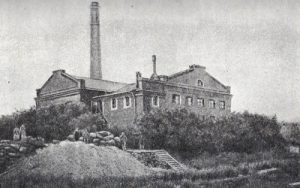
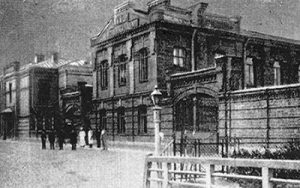
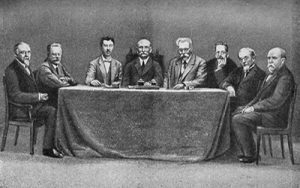
Since its foundation, the Institute involved chemical and chemical-technological laboratories of the Academy of Sciences, Technological, Polytechnic, Mining institutes, Artillery, Engineering and Military Мedical Academies, the Central Laboratory of the Military Department, scientific and technical laboratory of the Maritime Department. The founders of the Institute were outstanding Russian scientists academicians N. S. Kurnakov, V. N. Ipatiev, professors A. E. Favorsky, V. E. Tishchenko, L. A. Chugaev, P. P. Fedotyev, A. E. Poray-Koshits, A. A. Yakovkin. Academician N. S. Kurnakov became the first director of the Institute.

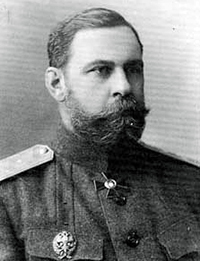

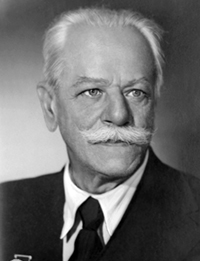
In the 20s years in the development of the Institute (L. A. Chugaev, V. P. Ilynski, B. K. Klimov), the chemical production was created including phosphorus, potassium chloride, phosphoric anhydride, phosphoric acid, mineral and organic dyes, reagents, etc. Later in their development established the industrial production of cyanide compounds on the chemical plants, ensuring the needs of gold mining and other industries. Conducted under the leadership of N. S. Kurnakova theoretical and experimental studies were the basis of the technology of processing of silvinite and carnallite of the Verkhnekamskoye Deposit of potassium salts and provided the creation of the largest base for the production of potassium salts and raw materials for magnesium. The alumina processing plant built in Volkhovstroy by the method developed under the leadership of A. A. Yakovkin became a pioneer of the domestic aluminum industry. Works in the field of electrolysis of molten salts conducted by professors P. F. Antipin and A. F. Alabyshev, laid the Foundation for the production of metal magnesium and sodium. On the basis of these studies in Leningrad was built the country’s first pilot plant for the production of magnesium. At the same time, prof. P. P. Fedotyev and his colleagues developed the technology of electrolytic production of nickel and cobalt.
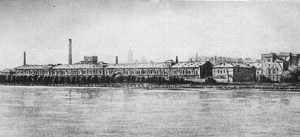
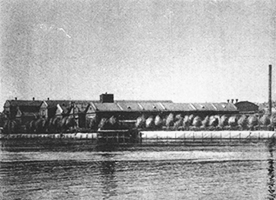
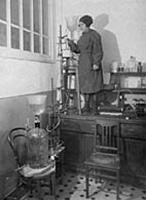
In the thirties was completed research synthesis of chlorinated compounds based on acetylene, which opened the way for the creation of industrial technology of artificial chlorine-containing rubber «Sovpren». Works of Academician A. E. Favorsky and Professor A. L. Klebansky fixed the priority of domestic chemical science in this area.
In the same years, under the leadership of S. S. Markov, a new method of production of active pyrolusite, superior in quality to all depolarizers used at that time, was developed and applied in the industry.
In 1926, on the initiative of academician V. N. Ipatiev, the high pressure Laboratory was established in GIPH, and it soon grew into an independent scientific organization. On its basis in 1927 the Institute of high pressures was formed, where works were carried out in the field of organic catalysis, synthesis of ammonia, displacement of metals from salts.
A number of areas of work started in GIPH, resulted in an independent major scientific and technical problems, the development of which were transferred to the newly organized specialized scientific institutions – the State Institute of High Pressures (GIVD), the Union Research Institute of Synthetic Rubber (VNIISK), the Union Aluminum-Magnesium Institute (VAMI), Chlorine Institute, Galurgy Institute, institutes Gipronickel, Giprohim.
With the development of the chemical industry, the emergence of new applied institutes of chemical profile, a growing share in the work of GIPH occupied the theoretical problems of chemical technology, basic research. We note a large cycle of works on the study of the equilibrium of salt systems by methods of physical and chemical analysis (crystal-optical, x-ray; N. S. Kurnakov, V. P. Ilyinsky), which are the basis for solving technological problems in the production of inorganic products.
The Institute conducted a lot of research in the field of chemistry and technology of Halogens (chlorine, bromine, iodine), as well as in the synthesis of organic products through halogen-containing compounds, including organochlorine solvents. Of particular importance is a series of works on the study of hydrogenation of a number of cyclic compounds under pressure in the presence of catalysts (A. E. Favorsky, D. V. Tishchenko, etc.). Research in the field of hydrometallurgy, electrochemistry and corrosion (P. Fedotyev, N. P. Fedotyev) has received significant development. Much attention is paid to the synthesis of explosives (S.P. Vukolov) and the study of combustion processes (D.P. Konovalov).
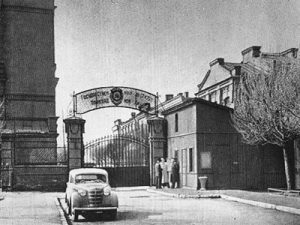
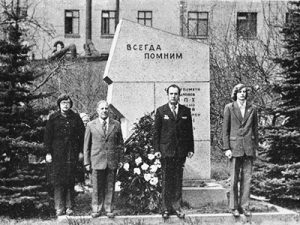
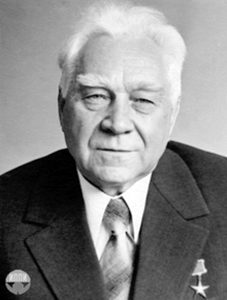
In 1936, the Design Department was established in the GIPH. On it the order of the People’s Commissariat of heavy industry assigned the design of all production technologies developed by the Institute. By 1940, it had completed projects of chemical plants for the resurrection Bereznikovsky, Solikamsky, Chernorechensky, Nevsky, Konstantinovsky plants. The successful development of production at these plants completely freed USSR from imports of chemical products such as phosphoric anhydride and phosphoric acid, pure chemicals, cyanide compounds, potassium fertilizers, alumina for the aluminum industry, metallic magnesium and sodium, electrochemical manganese dioxide, acetylene-based chloroprene products (chloroprene rubbers) and dozens of other products.
A distinctive feature of the pre-war scientific and technical activities of GIPH was to bring most of the work to the implementation of their results in industry.
During the Great Patriotic war, in the difficult conditions of the blockade, the work of GIPH was aimed at the most complete and rational use of raw materials available in Leningrad and the development of processes taking into account the need for maximum savings of material and energy resources. The Institute had three laboratories:
The pilot plant produced only products mastered during the war. The organization of new productions was carried out with use of the available rooms and the equipment and provided requirements of the Leningrad front and the Baltic fleet.
In the postwar period, a huge impact on the development of chemical science was played by the need to develop chemical aspects of nuclear power, providing chemical products and structural materials for new equipment. GIPH became the largest scientific center of applied chemistry and performed work on the development of the national economy and strengthen the country’s defense. The country faced the task of creating new branches of the chemical industry, new products for the rapidly developing areas of new technology: energy, maritime transport, rocket and space technology, nuclear technology, aviation, microelectronics and other important areas of the national economy. The participation of chemists in new fields of technology required a sharp increase in the scientific and technical capabilities of GIPH, and in a relatively short period of time its staff increased to almost ten thousand workers. A powerful experimental base was created – a modern chemical plant with pilot production and test benches for joint work with design organizations. The Design Department was transformed into a Design Office, and it was entrusted with the general design of a number of enterprises of the chemical industry. Large complex branches were established in Perm and Crimea.
For more than 40 years, Research Center «Applied Сhemistry» has been providing chemical support to all space objects, including manned space programs. Achievements in this and other areas shall GIPH outstanding scientists: academician V. S. Shpak, who headed the Institute from 1953 to 1977, E. A. Sivolotskaya, G. L. Antipenko, R. A. Gutner, V. S. Irisova, S. F. Bulusheva, I. E. Katina, S. S. Markov, V. A. Ivanov, A.V. Kartavenko, V. A. Didyk, talented engineers, technologists and designers: A. G. Dunts, P. S. Ivanov, A. M. Grebenik. Experience in the field of liquid rocket fuels allowed RRC «Applied Chemistry» to make a significant contribution to the energy, chemistry and technology of components of mixed solid and paste-like rocket fuels (S. S. Markov, B. K. Krichevtsov, B. V. Gidaspov, M. S. Vilesova, V. M. Postnikov, O. N. Pavlov, S.S. Georgievsky).
The successful introduction of new chemical products is inextricably linked with the selection, and often with a special design compatible materials: alloy, for the manufacture of rocket parts and engines, anti-friction parts, pump turbines, erosion – and corrosion-resistant elements of nozzle blocks, highly porous catalytically active elements, the electrode and dielectric nodes ion-plasma and electric heating engines. Fundamental works in the field of corrosion (A. M. Sukhotin, P. F. Drozhzhin, V. S. The Zotikov) made it possible to solve complex tasks of creating designs with the use of aggressive media. Under the guidance of Professor R. G. Avarbe formed and successfully developed a new direction of applied physical chemistry, which allows by combining methods of powder metallurgy, fine control mechanism of gas-phase deposition, thermochemical treatment to create new materials (will pyrographit, pirovolfram, nitrides, borides), which has amazing properties of heat resistance, corrosion resistance, electrical conductivity, thermal conductivity.
In the early fifties GIPH expanded research in the field of bromine industry under the leadership of M. N. Machulkina initiated by Professor V. P. Ilyinsky. During this period works on complex use of the largest reserves of mineral raw materials of lake Sivash in the Crimea were carried out, as well as the use of resources of the lake Kara-Bogaz-Gol, in subsequent years, research was carried out in the Perm branch of GIPH and were devoted to the improvement of industrial production of iodine, bromine and their derivatives on the basis of the place of birth of the Urals and Siberia. Currently, the Perm branch is the leading organization in the field of iodine-bromine and design of iodine-bromine production in Russia. The expansion of production of bromine and iodine provided the creation of new fire extinguishing agents, medical preparations, reagents etc.
Since 1955, work on the creation of domestic phosphors for various purposes has begun. As a result of research under the leadership of L. J. Markovsky utilized in industry manufacture of phosphors for fluorescent lamps and tubes, self-luminous signs and light colors, not inferior to world standards.
Since 1957 on own scientific and technical developments (I. F. Tupitsyn, etc.) production of the wide nomenclature (about 2000 names) of the preparations labeled with stable and radioactive isotopes providing not only requirements of the country, but also export to various countries of the world (the USA, Germany, France) is created at Pilot plant of GIPH.
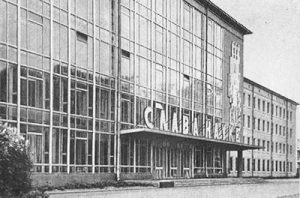
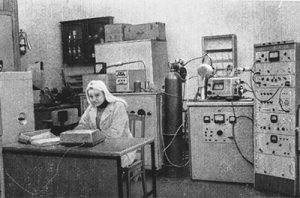

Research in the field of basic organic synthesis has been widely developed. First performed exceptionally interesting and practically important studies on the synthesis, creation of technologies of a wide spectrum of amines and aminosilane products (A. Z. Savelski, P. N. Ovchinnikov, Y. Y. Pneva, G. N. Chistyakova, S. A. Poddubnaya, G. F. Tereshchenko), aliphatic and heterocyclic amines, amino alcohols, amino acids, substituted hydrazines, hydrogen peroxide. Fundamental and technical developments in the field of hydrogen fluoride, fluorine organic compounds (I. L. Terushkin, B. N. Maksimov, V. G. Barabanov) resulted in the creation of original domestic technologies with the introduction into the industry and the release of more than 250 new fluorine-containing products. Today one of the main directions of work of RRC «Applied chemistry», Perm branch will be the scientific researches and applied developments in the field of chemistry and technology of fluorine compounds: a study of the properties, technology development, design and production (ozone-safe coolants for refrigeration equipment, high purity gases to the new technologies of plasma chemical etching in microelectronics, fluorocarbon gas environment as components of artificial blood substitutes, preservatives living organs and tissues, blowing agents, fire extinguishers based on perfluorinated surfactants for extinguishing oil products on sea and river vessels, aircraft, nuclear power stations; anti-wear corrosion compounds, fluoromonomers for the production of a wide range of polymer structural materials with high chemical, thermal and frost resistance, etc.). The Research Сenter on the basis of fundamental and technological researches defines strategy and tactics of transfer of the industry of Russia to ozone-safe freons.
An important role in the development of industrial chemical technologies is given to the search for effective catalysts for specific chemical reactions.
A large series of theoretical studies was completed by a group of authors together with employees of the production of fundamental reference «Thermodynamic Properties Individual Substances» (P. I. Tverdovskiy, G. A. Hachkurusov), passed three editions and translated abroad.
The studies of the energy structure of atoms, radicals and molecules by low-temperature spectroscopy (isolated in inert matrices at the temperature of liquid helium) are technically complex. The method was developed in GIPH for the first time in the country almost simultaneously with the introduction into the world scientific practice.
Theoretical representations in the field of numerical modeling of internal flows of multicomponent chemically reacting mixtures are developed, economical algorithms for calculation of combustion chambers, Laval nozzles, flows in channels, choice of optimum conditions, forecasting of emergency situations are developed (M. H. Strelets). Quantum chemical methods for calculating the possibility of existence of high-energy metastable compounds are developed. Metastable compounds are the most important direction in the energy of the XXI century, in particular, as a source of energy for rocket technology.
Laser chemistry is a relatively new field of activity of GIPH. Studied elementary reactions that determine the effectiveness of laser environments (V. I. Mashendzhinov, L. D. Scherba); by the method of double IR-UV resonance laser at nonequilibrium vibrational excitation of the investigated gas-phase processes of inter- and intraspecific exchange vibrational energy, vibrational-translational relaxation and photodissociation spectra of a number of alkyl – and perfluoroalkyl iodide molecules. Methods of synthesis, physicochemical and operational properties of perfluoroalkyl iodides were studied and their pilot production was organized (B. N. Maksimov, S. L. Dobychin, M. I. Lyapunov), the technology of nonlinear crystals was developed (I. F. Tupitsyn). Developed research of high-power pulsed and continuous chemical lasers (Y. A. Malyshev, V. I. Mashendzhinov, M. A. Rotinyan), intensive work was carried out on the components and formulations of fuels for gas-dynamic lasers, systems closed circuit for the electric discharge CO – and CO2-lasers (R. G. Averba, E. I. Katin).
To conduct research in the field of recycling and disposal of gaseous, liquid and solid wastes of chemical production in 1963 in GIPH, a laboratory was established, led by K. K. Bogushevskaya and then by V. F. Plehotkin. In 1991 on the basis of this laboratory the Department of ecology was created, then transformed into Research Complex of Ecology and Industrial Safety. The tasks of the complex include protection of the environment from the harmful effects of industrial enterprises, ensuring the safety of chemical processes, and chemical safety of the technosphere.
A team of research and development under the leadership of B. M. Laskin a principle of creation of control systems for hazardous processes with automatic protection from accidents, methods of elimination of spillages of highly toxic substances and emergency fire fighting, method of expert assessment of chemical safety of industrial objects. Scientific and methodological foundations of the study of thermal safety of chemical processes are implemented in the integrated program “Thermal safety” (A.I. Benin).
Integrated technologies for wastewater treatment and gas emissions from a number of industrial plants were developed and surveys of the largest chemical enterprises of the Dzerzhinsky industrial district were conducted, which were used in the preparation of the Federal program «Revival of Volga».
Special attention is paid to the organization of modern information support of both fundamental and technological developments. RRC «Applied chemistry» has one of the largest in St. Petersburg scientific and technical libraries, the Fund of which has more than 950 thousand units. А unified data Bank on chemistry and chemical technology with automated reference and information services has been created.
In 1944 for merits in creation of the chemical industry of Russia and carrying out defensive works GIPH is awarded the Order of the Red Banner of Labor, in 1969 is awarded the Оrder of Lenin for services to the development of domestic chemical science and industry in the field of space exploration.
For all years of existence of the enterprise more than 3000 chemical technologies were developed and on projects of GIPH in the USSR more than 250 plants and productions of special and civil chemistry are created.
Russian Research Center «Applied chemistry» with wide scientific cooperation with the Russian Academy of Sciences, universities, industry institutes, design organizations and foreign firms is the most important chemical center of Russia, preserving and multiplying the glorious traditions of Russian science.
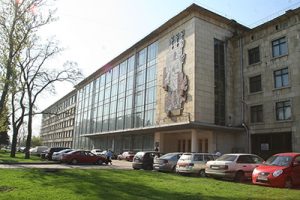

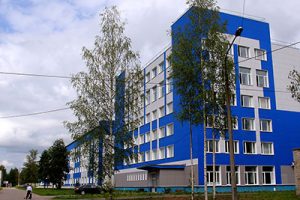
41, Voronezhskaya str., Perm, Perm Krai, 614034, Russia
Reception: phone +7 (342) 206 11 60
E-mail: giph@giph.su